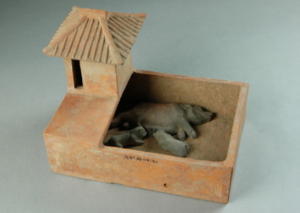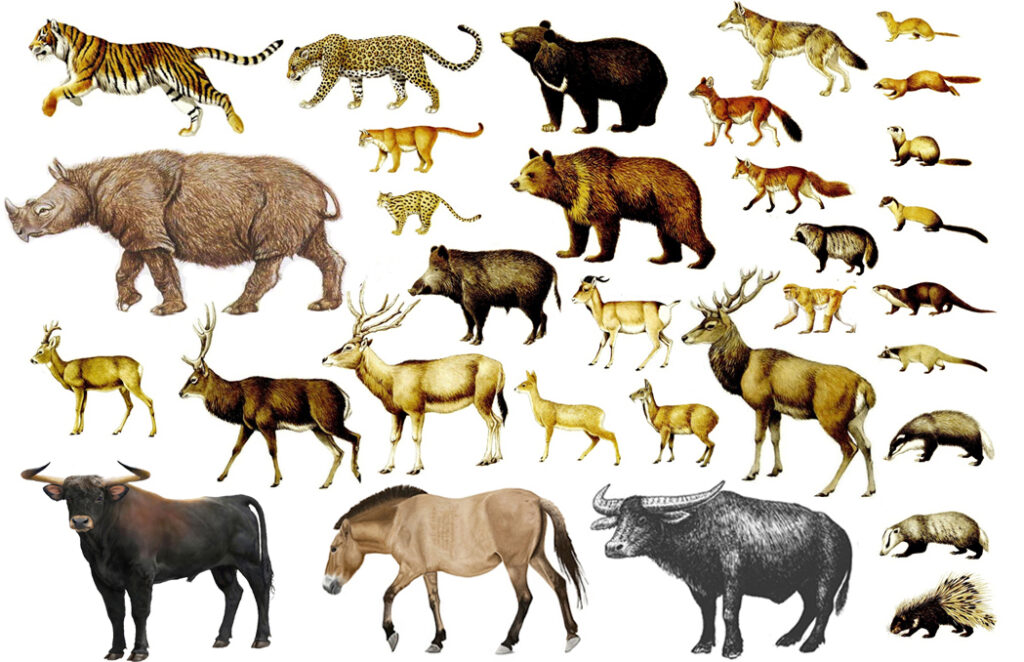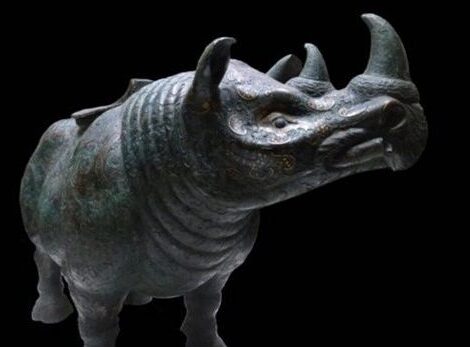Animals in China
East Asia was once home to a wide variety of animal species that have been displaced over the last few thousand years of climate change, agricultural expansion, urbanization, and landscape modification by humans. For example, Sumatran rhinoceros were once common as far north as the Yellow River Valley, but are no longer found in mainland China due to a combination of habitat loss and hunting for rhino horns. Zooarchaeology is one of the only sources of long-term data on East Asia’s native fauna and on long-term processes of habitat destruction, making it a powerful tool for conservation biology.
In collaboration with Dr. Brian Lander at Brown University and Mindi Schneider at Wageningen University, the Netherlands, Professor Brunson is using zooarchaeological data from Chinese archaeological sites to document past distributions of native East Asian wild fauna and to examine the long-term social and environmental dimensions of animal domestication. We have recently completed articles on the wild fauna of north China, the history of pigs in China, and the history of cattle in China. Our interdisciplinary approach draws from archaeology, history, and sociology in order to trace the history of important wild and domesticated species through time. Our work provides data for documenting when and how wild animals were extirpated or went extinct in different regions of East Asia, and for understanding how domesticated animals became essential to human societies.
Learn more about our research projects below!
WILD MAMMALS OF ANCIENT NORTH CHINA
SUMATRAN RHINOCEROS
The Sumatran rhinoceros was extirpated from mainland East Asia by hunting and habitat loss
PDFs available on Katherine Brunson’s Academia.edu page






